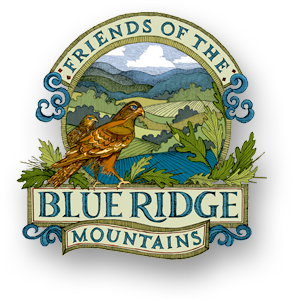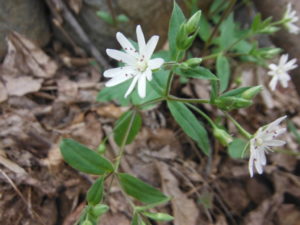Article Published in Overlook ATJ Summer 2017
“The problem of living is, at bottom, an economic one. And this alone is bad enough, even in a period of so-called ‘normalcy.’ But living has been considerably complicated of late in various ways — by war, by questions of personal liberty, and by ‘menaces’ of one kind or another.”
Benton MacKaye wrote this in 1921 — when the world seemed extremely complicated and uncertain. I don’t think I’m alone in feeling we are now again struggling with much of the same fears and uncertainties. We seem to be at a pivotal point for our country and our planet. So, what can we do within the tiny space in which we have some control and certainty?
For MacKaye it was simple: “ there are three things: To walk, to see, and to see what you see.” Living as we do now, in Harpers Ferry, my husband, Chris and I need only to walk out our back door to see what we see.
There are a multitude of hikers passing through town. You can find them waiting in line for boxes at the post office, lounging in front of the Appalachian Trail Conservancy’s (ATC) headquarters, enjoying Pizza at Mena’s, our local Italian eatery, and checking-in back home with WIFI and coffee at the Guide Shack — a local, hiker-friendly coffee shop. And they visit Laura at the Harpers Ferry Outfitters for fuel and new boots. The hikers come in all shapes, sizes, ages, colors, and genders. The accents are different — from Deep South drawls to northern flat A’s — and the international contingent can often have you guessing. Conflicts revolve around how soon they should head off for food and political discussions are limited to the fact that they still can’t set up tents in the town proper.
Beyond the hikers, there is the community. My morning constitutional will take me past Harpers Ferry National Historical Park and the Appalachian National Scenic Trail park offices, where dedicated and talented public servants are busy meeting and greeting visitors from around the world. The ATC Visitor Center volunteers work seven days a week to share the story of the Appalachian Trail to one and all passing through their door.
With just a few more steps you can follow the white blazes through town and back onto the Trail. Heading north, you walk along the C&O Canal to where the A.T. veers left up Weverton cliffs and beyond to Katahdin. The southern trek takes you across the Shenandoah River and a climb up Loudoun Heights from where Springer Mountain lies just a little over 1,000 miles.
It is a beautiful town and a gateway to the even more spectacular refuge that is the Appalachian Trail. Yet, in all honesty, and with all this literally out my back door, I too often find myself engrossed in news reports and on-line chatter. I succeed only in raising my blood pressure and reducing my spirit. In reading MacKaye, I realize that this, unfortunately, is the default human condition. He wrote: “For we need this thing wilderness far more than it needs us. Civilizations (like glaciers) come and go, but the mountain and its forest continue the course of creation’s destiny. And in this we mere humans can take part-by fitting our civilization to the mountain.” Ninety- six years later, this still rings true. I’m lucky to live in a town that has fit its civilization into the mountain. I just need to walk out my back door more often. Here’s hoping you too can take that walk, to see, and to see what you see.
Sandra Marra / ATC Chair, FBRM Board Member
The Appalachian Trail Conservancy (ATC) was founded in 1925 by volunteers and federal officials working to build a continuous footpath along the Appalachian Mountains. A unit of the National Park Service, the A.T. ranges from Maine to Georgia and is approximately 2,190 miles in length. It is the longest hiking-only footpath in the world. The mission of the ATC is to preserve and manage the Appalachian Trail – ensuring that its vast natural beauty and priceless cultural heritage can be shared and enjoyed today, tomorrow, and for centuries to come. For more information, please visit www.appalachiantrail.org


Leave a Reply
Your email is safe with us.